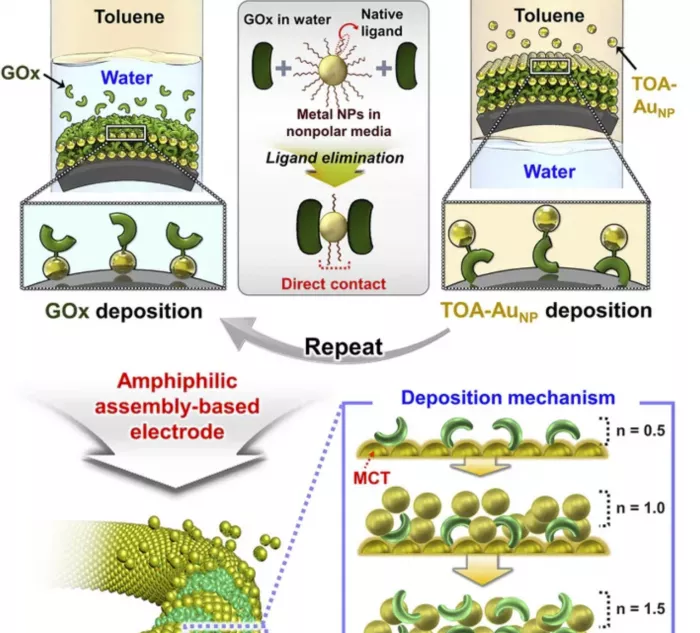Electrodes are useful in a variety of biosensor devices, including electrochemical systems Biofuel cells (BFCs), which convert biochemical energy into electrical energy under mild biological conditions, are particularly promising candidates to power a wide range of bioelectronic devices
Despite these characteristics, most biofuel cells provide low power output and short-term operational stability because of their poor electron transfer between enzymes and electrodes and between adjacent enzymes. These electron transfer problems are closely related to the performance of almost all electrochemical sensors, including BFCs and other bioelectronics.

In the journal Applied Physics Review of AIP press, scientists from South Korea and the United States solved these shortcomings through an amphiphilic composition aimed at preparing high-performance biofuel cells. This method can induce favorable interface interaction between electrocatalysts, significantly improve the electron transfer kinetics of electrodes, and generate hybrid biofuel cells with high power output and good operation stability.
This method induces the favorable interface interaction between electrocatalysts and improves the electron transfer kinetics of the electrode. It realizes the unprecedented large-scale loading of hydrophilic enzymes and hydrophobic / conductive metal nanoparticles, and greatly improves the electron transfer efficiency and current density.
The amphiphilic assembly composed of glucose oxidase in aqueous medium and hydrophobic / conductive nanoparticles in non-polar medium was deposited on cotton fiber / textile to form an anode, and its electron transfer efficiency and immobilization stability were significantly improved. The cathode is formed by sputtering platinum onto cotton fibers coated with gold nanoparticles to improve the efficiency of oxygen reduction reaction. The researchers believe that this assembly method may provide a basis for the preparation of various high-performance electrochemical devices, including biofuel cells.